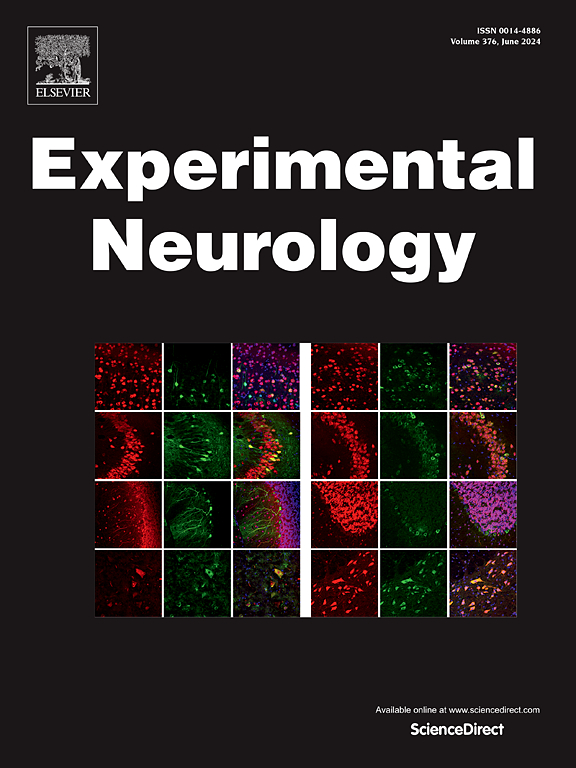Sex-related disparities in mobility, sensory function, and psychological outcomes in Wistar and Sprague-Dawley rats following spinal cord injury
IF 4.6
2区 医学
Q1 NEUROSCIENCES
引用次数: 0
Abstract
Spinal cord injury (SCI) causes persistent motor, sensory, psychological, and bladder dysfunctions, with clinical evidence indicating better recovery in females compared to males. However, the mechanisms driving these sex-specific differences remain unclear. This study assessed sex- and strain-specific differences in recovery using Wistar and Sprague-Dawley (SD) rats. SCI was induced at the T10 spinal level via a contusion model, and functional recovery was evaluated through standardized tests for locomotion, sensory thresholds, psychological outcomes, and bladder function. Female rats demonstrated superior motor recovery, with higher Basso, Beattie & Bresnahan (BBB) scores and improved coordination, alongside improved sensory outcomes, evidenced by reduced mechanical pain sensitivity and longer thermal response latencies. Strain differences were observed, with SD rats exhibiting greater pain thresholds than Wistar rats. Females also showed improved bladder outcomes, including higher leak point pressure and reduced bladder volumes, while males displayed more pronounced depression-like behaviors. Cognitive performance did not differ significantly between sexes. These findings highlight sex-specific advantages in motor, sensory, and bladder function, as well as strain-dependent sensory differences, emphasizing the importance of considering sex and strain in designing targeted therapies for SCI rehabilitation.

求助全文
约1分钟内获得全文
求助全文
来源期刊

Experimental Neurology
医学-神经科学
CiteScore
10.10
自引率
3.80%
发文量
258
审稿时长
42 days
期刊介绍:
Experimental Neurology, a Journal of Neuroscience Research, publishes original research in neuroscience with a particular emphasis on novel findings in neural development, regeneration, plasticity and transplantation. The journal has focused on research concerning basic mechanisms underlying neurological disorders.
 求助内容:
求助内容: 应助结果提醒方式:
应助结果提醒方式:


